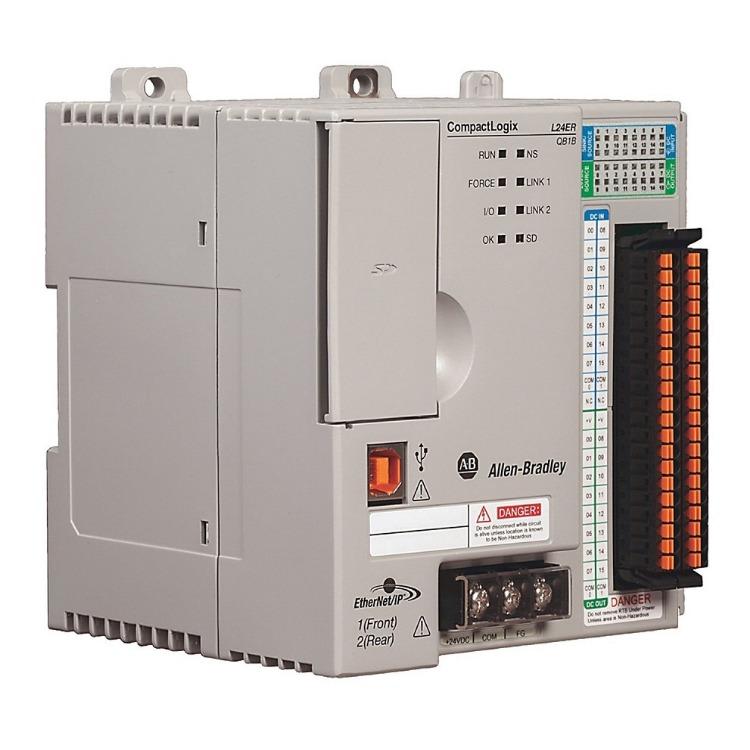
Understanding and Applying Safety Considerations for CompactLogix 5370 Controllers
When working with industrial automation systems, safety must always come first. Rockwell Automation’s CompactLogix 5370 controllers are built with robust functionality and are commonly used in high-performance control applications. But like all industrial equipment, their safe use requires a clear understanding of built-in safety features, environmental conditions, and proper handling.
This guide walks you through the critical safety considerations and best practices when working with CompactLogix 5370 controllers ensuring safety, compliance, and system longevity.
Step 1: Start with Safety Documentation
Before touching hardware or opening a panel, thoroughly review the user manual and safety instructions provided by Rockwell Automation. These documents include:
-
Installation guidelines
-
Wiring requirements
-
Environmental specifications
-
Legal and regulatory standards (e.g., OSHA, NEC, CE)
Tip: Always follow the most current documentation and verify compatibility with your specific controller model.
Step 2: Only Allow Trained Personnel to Handle the System
Only qualified personnel should install, commission, maintain, or troubleshoot CompactLogix 5370 controllers. These team members should be familiar with:
-
Applicable electrical codes
-
Lockout/tagout procedures
-
Proper use of personal protective equipment (PPE)
Improper handling or unauthorized modifications can compromise both safety and product certifications.
Step 3: Understand Safety Labels and Their Meanings
CompactLogix controllers include warning labels and symbols that highlight potential hazards. Understanding them can prevent serious injury or equipment damage:
-
WARNING: Explosive environment risk
-
ATTENTION: Electrical/mechanical hazard risk
-
SHOCK HAZARD: Indicates high-voltage areas
-
BURN HAZARD: Alerts to hot surfaces
-
ARC FLASH HAZARD: Requires PPE and safe practices to avoid serious injury
Always de-energize equipment before maintenance or wiring changes.
Step 4: Review Hazardous Location Ratings
Some 5370 models are Class I, Division 2 certified for use in hazardous environments. Understand your model’s markings and ensure it complies with:
-
Groups A, B, C, D hazardous gases
-
Proper installation in nonhazardous or certified hazardous locations only
-
Required enclosure ratings and transient voltage limits
Do not substitute components—this may void certification and compromise safety.
Step 5: Apply Basic Safety Precautions
Key safety precautions to follow during installation or operation:
-
Do not disconnect connections while energized unless in a known nonhazardous area
-
Secure external connections using the locking mechanisms provided
-
Only replace batteries in nonhazardous environments
-
Use original components specified by Rockwell Automation
Improper removal or substitution may impair hazardous location protection.
Step 6: Prevent Electrostatic Discharge (ESD)
The CompactLogix 5370 controller is ESD-sensitive. To avoid damaging internal components:
-
Use a grounded wrist strap
-
Handle modules by the edges
-
Avoid touching connectors and circuitry
-
Store spares in static-safe packaging
Always discharge static before handling controller modules.
Step 7: Follow European Hazardous Location Compliance
If your application is based in the EU, ensure your installation complies with:
-
Directive 94/9/EC (ATEX compliance)
-
Standards: EN 60079-0 and EN 60079-15
-
IP54-rated enclosures for Zone 2 applications
-
Transient voltage protection up to 40% above rated input
European safety directives are legally enforceable do not skip this step for CE-certified systems.
Step 8: Ensure Proper Enclosure and Installation in Hazardous Locations
For safe use in Zone 2 environments:
-
Install the controller in a certified enclosure providing at least IP54 protection
-
Limit transient disturbances using surge protection or isolation transformers
-
Use the controller only within rated voltages and ambient conditions
A properly enclosed controller is key to both safety and performance.
Step 9: Commit to Ongoing Training and Education
Automation safety isn’t static. Engineers and technicians should stay current through:
-
Rockwell Automation product bulletins and updates
-
Online certification or refresher courses
-
Trade events, webinars, and community forums
-
Manufacturer-hosted safety and product training workshops
Continuous learning minimizes risk and improves system uptime.
Conclusion
Safety when working with CompactLogix 5370 controllers isn’t optional it’s foundational. Whether you're installing in a hazardous zone or maintaining a standard panel, each step must be approached with precision and adherence to Rockwell’s safety protocols.
By following the steps outlined above including understanding documentation, recognizing hazards, applying installation best practices, and staying educated you can reduce risk, ensure compliance, and build a safer automation environment.
For more information, contact PLG Automation:
Email: sales@plgautomation.com
Phone: 800-906-9271
